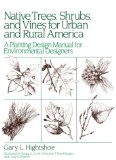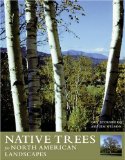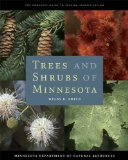| The right trees can make your life easier and your landscape lovelier every season. |
| ABOUT US START IDEAS DO LESS USEFUL PLANTS PROJECTS VIEWS RESOURCES TOPICS |
|
|
|||
If hiking in the woods refreshes you, if you like to lose yourself in a treed environment, if you wish you could spend some time every day in the woods, why not make your own? But how do you go about designing a woodland? Which trees would you use, and how many of them, and what other plants do you need? It's not an exact science (it's an art, which is what makes it so fun!), but read on for pointers. Issues of Space Bigger gardens might allow a choice of different types of woods or even multiple types, but you can mimic the feel of a woodland in almost any sized garden. There are a variety of small trees that fit into many different habitats, and even one tree—well chosen and planted with effective companions&mdsah;can suggest a woodland. How many trees to use depends on your circumstances. Is the soil rich? It might support trees growing closer together, like they do in the fertile soils of the eastern U.S. mixed deciduous forests. Fertile forests often have understory trees growing only a foot or two apart among more widely spaced (perhaps ten to twenty feet, depending on species and age) canopy trees. Less hospitable soil, such as shallow or very acidic soil, will host fewer species and fewer individuals, and the individuals will likely be farther apart. Trees, given time, will alter their environment to suit them. Some trees create their own fertile soils by dropping nutrient-rich leaves rather than sucking all the nutrients back out of their leaves before they drop. Other trees such as Jack pine drop copious quantities of acidic needles, creating a thick mulch for their roots and keeping the competition at bay. Closely growing trees are better able to modify the microclimate, blocking wind and sunshine from the forest floor, which helps to keep their dropped leaves in place. Those leaves gradually decay, sending a steady stream of nutrients into the soil and retaining moisture around the trees' roots. Issues of Climate The type of woodland you can grow will depend not only on the space you have, but on your climate. In North America, mixed deciduous forests (dominated by maple, oak, basswood, and poplar trees) grow well in temperate areas with plenty of rainfall, mainly the eastern half of the continent between Maine and Virginia. North of the mixed deciduous forest, where winter temperatures freeze the ground every year (permafrost) and make it inhospitable to most trees, boreal forests of mainly evergreens (dominated by spruce, fir, pine, birch, and aspen) grow. There is an overlapping area between these two types of forest that supports a diverse mix of species from both habitats -- meaning that, if your climate allows it, you can pretty much pick and choose your community of trees from a vast array of possibilities, including trees that don't necessarily occur in your region's indigenous woods. Coastal plains forests are the regional woods in the southern part of the U.S. along the Gulf of Mexico and the Atlantic Ocean. They're dominated by pine, oak, and magnolia. Tropical areas have their own unique forests, as does every part of the world that can support trees. A smattering of knowledge about basic ecology will help you to create a forest that will be happy in its space and climate and will sustain itself with very little intervention on your part. After all, you are creating a landscape not only for your pleasure, but one that will, with good health and stewardship, give pleasure to others after you are gone. Choosing a Forest Community If you're not familiar with your native woodland or forest inhabitants, find a field guide for your area. It can be one that covers many types of forest, such as the National Audubon Society Nature Guide to Eastern Forests by Ann Sutton and Myron Sutton, or it can be a regionally specific book like Minnesota's Natural Heritage by John Tester. What you will get from the field guides is a description of a community of plants that grow well together. (Field guides also describe individual plants and animals, but good guides devote several chapters up front to describing where each type of forest grows, the climate and geography, and the major species of plant and animal associated with that community.) Field guides describe natives and non-invasive introduced plants that grow together in an observed natural community. However, the more you know about specific plants' habitats and/or your land's particular offerings and constraints (soil type, moisture, acidity, microclimates, etc.), the more creative you can be in predicting which plants will successfully combine in your woodland. Natives are often the best choice if you wish to supply habitat for your local wildlife, as well as if you want to minimize the plants' dependence on you, but you may decide to add non-invasive exotics for aesthetic reasons or to extend the blooming or fruiting season for wildlife. Choosing Your Tree Species Once you've decided on a basic type of woodland or forest (I use these terms interchangeably here because I'm speaking in general of tree-dominated landscapes, but ecologically speaking, they differ in that forests are denser treed, while woodlands have patches of meadow or clearing interspersed among groves of trees), then you might want more detail about each species of tree to help you choose which to plant. If you are lucky enough to have native forest adjacent to your property, you may be able to smother a nearby part of your land with leaf litter and see which of the trees from the forest volunteer to move in. If your area has a nursery that specializes in native plants, that's another great resource. Or your town might retain a forester who's available to consult free with residents. Then there are books, a favorite resource of mine as I like periods of pondering while I absorb new information, and I like to be able to re-read if I'm unclear about or can't remember what I read. Field guides will give you basic information about the trees in your target forest type, but they usually have only brief entries and perhaps a close-up photo of the tree's leaves or flowers. There are two great reference books that I use to learn more about native North American trees. The first is Gary Hightshoe's Native Trees, Shrubs, and Vines for Urban and Rural North America. Though this book doesn't have color photos, it presents copious information about each species (expected mature size and growth rate; soil and other climate preferences; descriptions of bark, flower, leaf, branch, and habit) in a standard format, and it also shows a drawing of the tree's typical structure and size, which makes it easier to envision the tree in a landscape. Of course, specimen trees will generally develop broader profiles and more dense lower foliage than trees grown close to each other. In the latter case, the canopy species will likely race to grow taller than their neighbors and then spread out above them, while the understory species may spread out underneath the canopies to take advantage of the available light. Here's where ecology comes in handy again. Tree-dominated landscapes generally contain several layers of vegetation of different heights, and the plants in each vertical layer typically have adapted to that layer's seasonally available light and moisture. Hightshoe's book, and perhaps your field guide too, lists the species commonly associated with each tree, which is helpful is you want to place it within a community where it will be adapted to find its niche and thrive. Hightshoe also presents information about typical geographic and ecosystem preferences for each species, so for instance if you want to build a riparian (riverside) woodland of species that will grow at your latitude, his book gives you the information you need to figure out which plants to include. Start with a known species, such as Betula nigra (River birch), and work from there, looking up each of its common associates (and their associates) to see which might suit your landscape. Or turn to one of his useful tables of trees for particular situations; not only does he group trees that prefer shady sites, moist soil, and so forth, but also those that are fragrant, poisonous, and have other characteristics you can use to narrow your search. If you want photographs or your eyes cross when you try to get information from tables, then I'd suggest Native Trees for North American Landscapes by Guy Sternberg with Jim Wilson. Here you'll find a couple of pages of text covering the general character and habits of each tree (sort of a personality profile) along with photos, close-ups of the bark or leaves and also photos of the whole tree, to make it easier to envision how you'd feel looking at it daily or how it might fit in your landscape. Sternberg and Wilson's book describes the general habitat in which each tree is found and gives other basic information like expected size and bloom period, but it does not match Hightshoe's extensive descriptions of physical character and growth habit, and it doesn't usually mention associated species. Both books are large and rather expensive, as they cover all of North America. If your property is located elsewhere in the world, you may want to try finding a book that offers similar data for your regional trees. Even in North America, you may prefer to seek out a local reference such as the recently released Trees and Shrubs of Minnesota Once you have a list of potential trees in hand, you can begin the fun process of designing your woodland! |
Other LessLawn articles about woodlands:
Native Trees, Shrubs, and Vines for Urban and Rural North America  Native Trees for North American Landscapes by Guy Sternberg with Jim Wilson  Trees and Shrubs of Minnesota  Consult LessLawn's annotated reading list of garden and ecology reference books! |
||
|
Thanks for visiting http://www.LessLawn.com! All site contents © 2001-2013 Evelyn J. Hadden, except where noted. All rights reserved. |